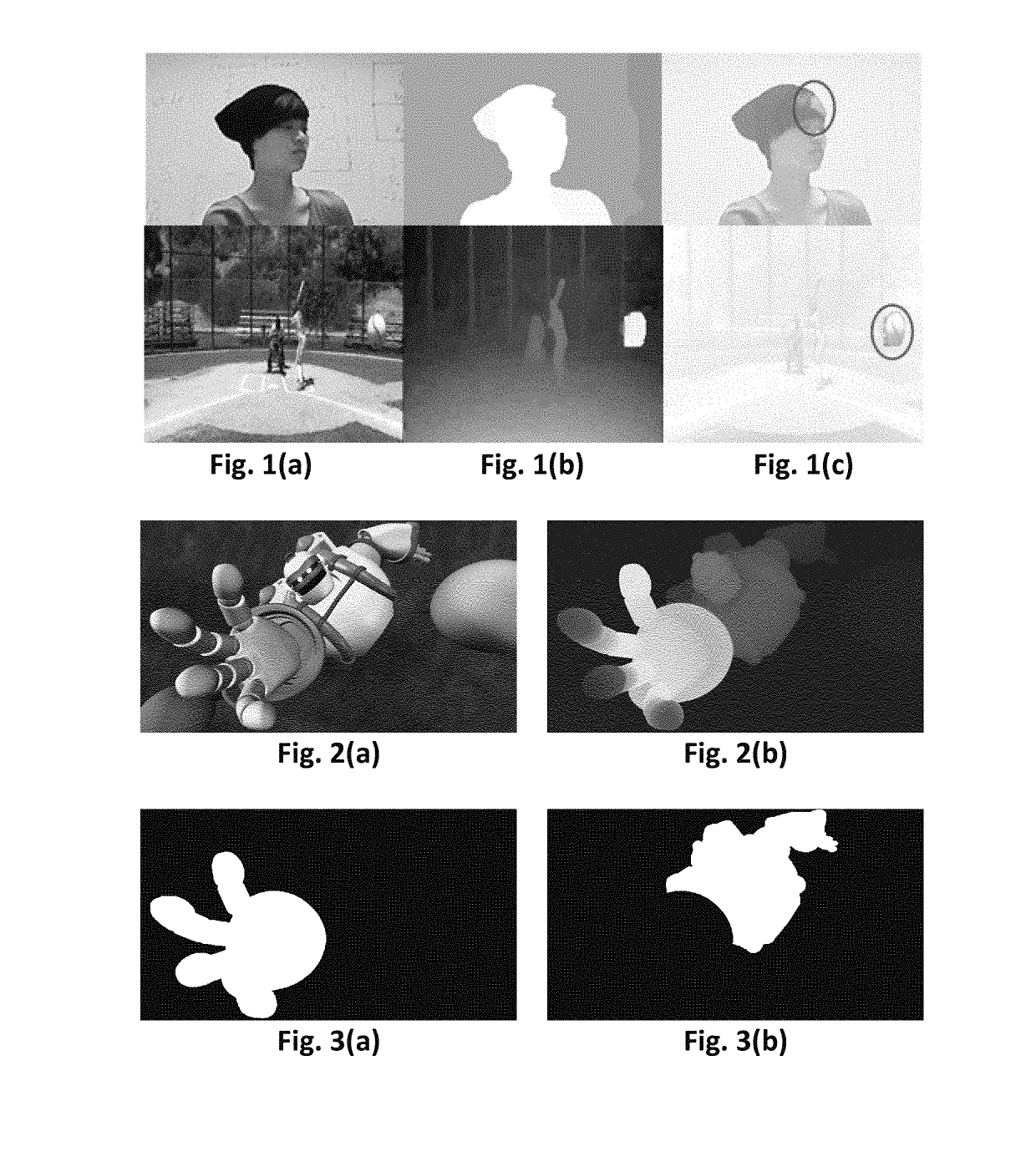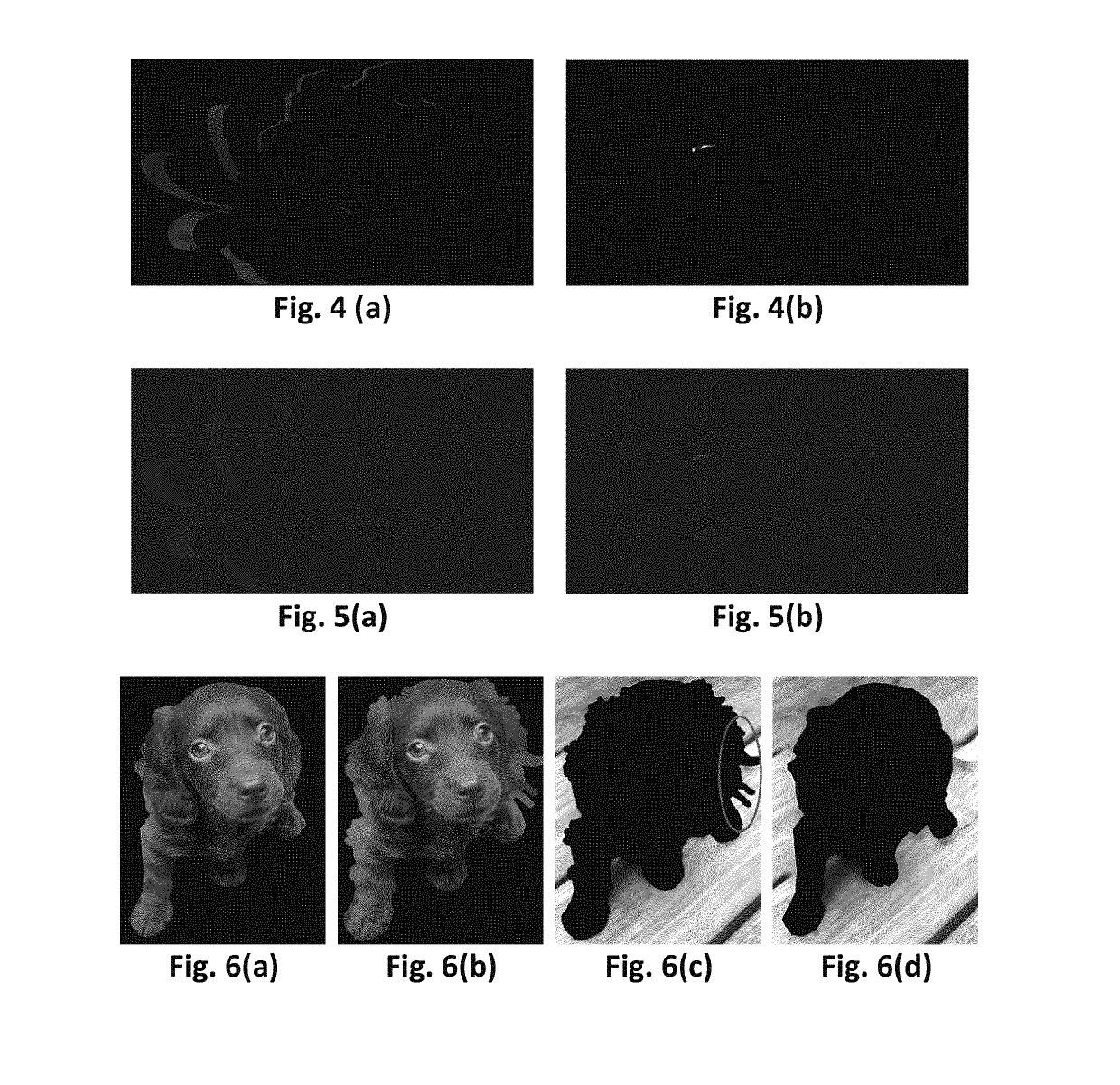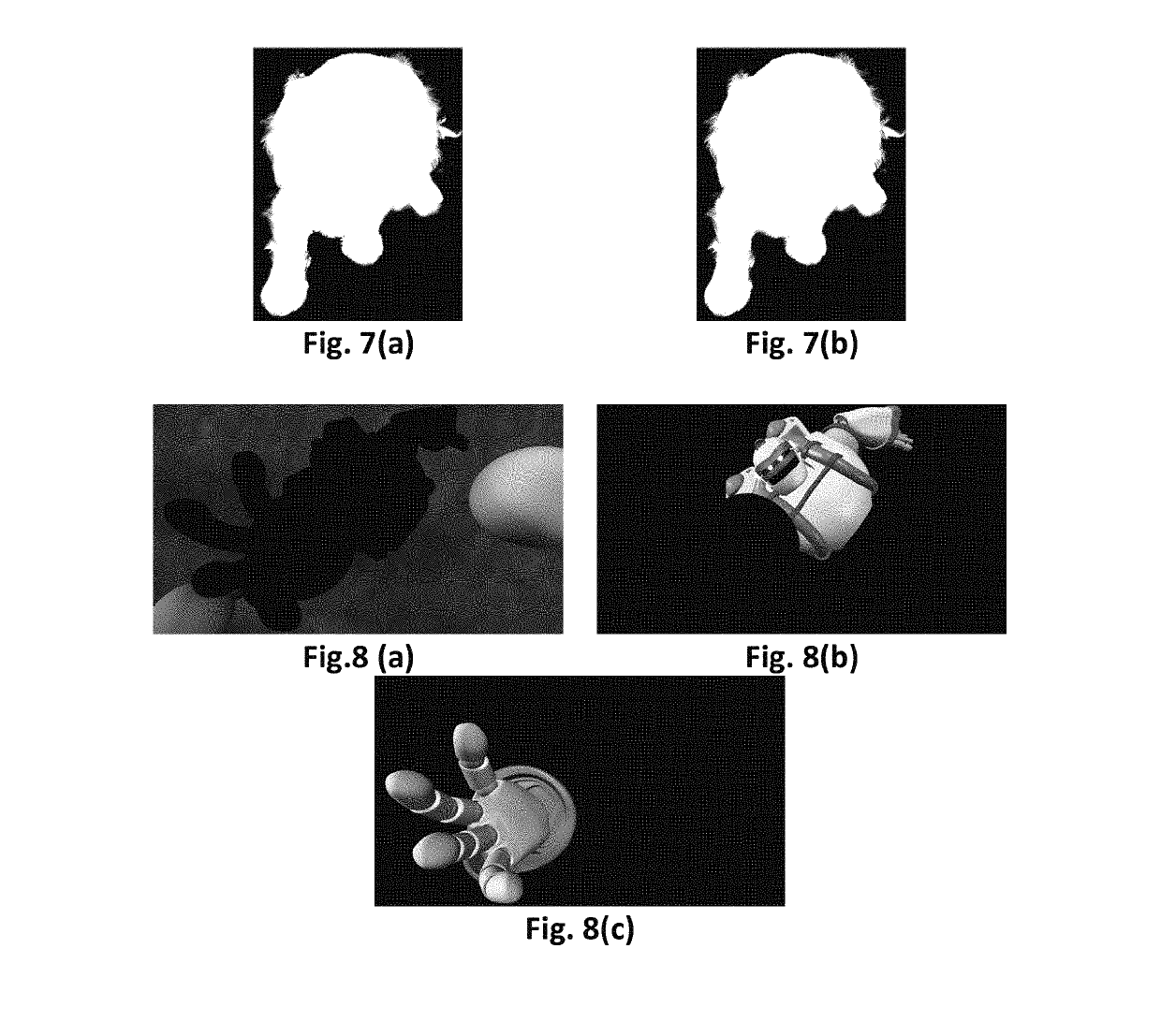Auxiliary data for artifacts--aware view synthesis
a technology of artifacts and auxiliary data, applied in the field of three-dimensional image improvement, can solve the problems of significant degradation of overall perception quality, and achieve the effect of reducing artifacts
- Summary
- Abstract
- Description
- Claims
- Application Information
AI Technical Summary
Benefits of technology
Problems solved by technology
Method used
Image
Examples
Embodiment Construction
[0059]FIGS. 1 (a), (b) and (c) show examples of a texture image, its corresponding disparity maps, and the overlay of the two. From FIG. 1 (c), it can be found that some areas, marked by red circles, are not perfectly aligned. Because a depth map obtained by depth cameras, stereo estimation or other methods may be subject to errors, they may not be aligned with the corresponding texture images. These mismatches are mostly distributed around the object boundaries because current disparity estimation methods or depth cameras cannot perfectly handle occlusions around object boundaries.
[0060]Other sources of errors are due to the compression errors of the texture and depth videos. When the depth map and texture are compressed, the depth and texture videos may be subject to distortion. This may result in considerable inconsistency between depth and texture. This inconsistency will in turn result in noticeable artifacts in generating new views from the depth and the corresponding texture ...
PUM
 Login to View More
Login to View More Abstract
Description
Claims
Application Information
 Login to View More
Login to View More - R&D
- Intellectual Property
- Life Sciences
- Materials
- Tech Scout
- Unparalleled Data Quality
- Higher Quality Content
- 60% Fewer Hallucinations
Browse by: Latest US Patents, China's latest patents, Technical Efficacy Thesaurus, Application Domain, Technology Topic, Popular Technical Reports.
© 2025 PatSnap. All rights reserved.Legal|Privacy policy|Modern Slavery Act Transparency Statement|Sitemap|About US| Contact US: help@patsnap.com



